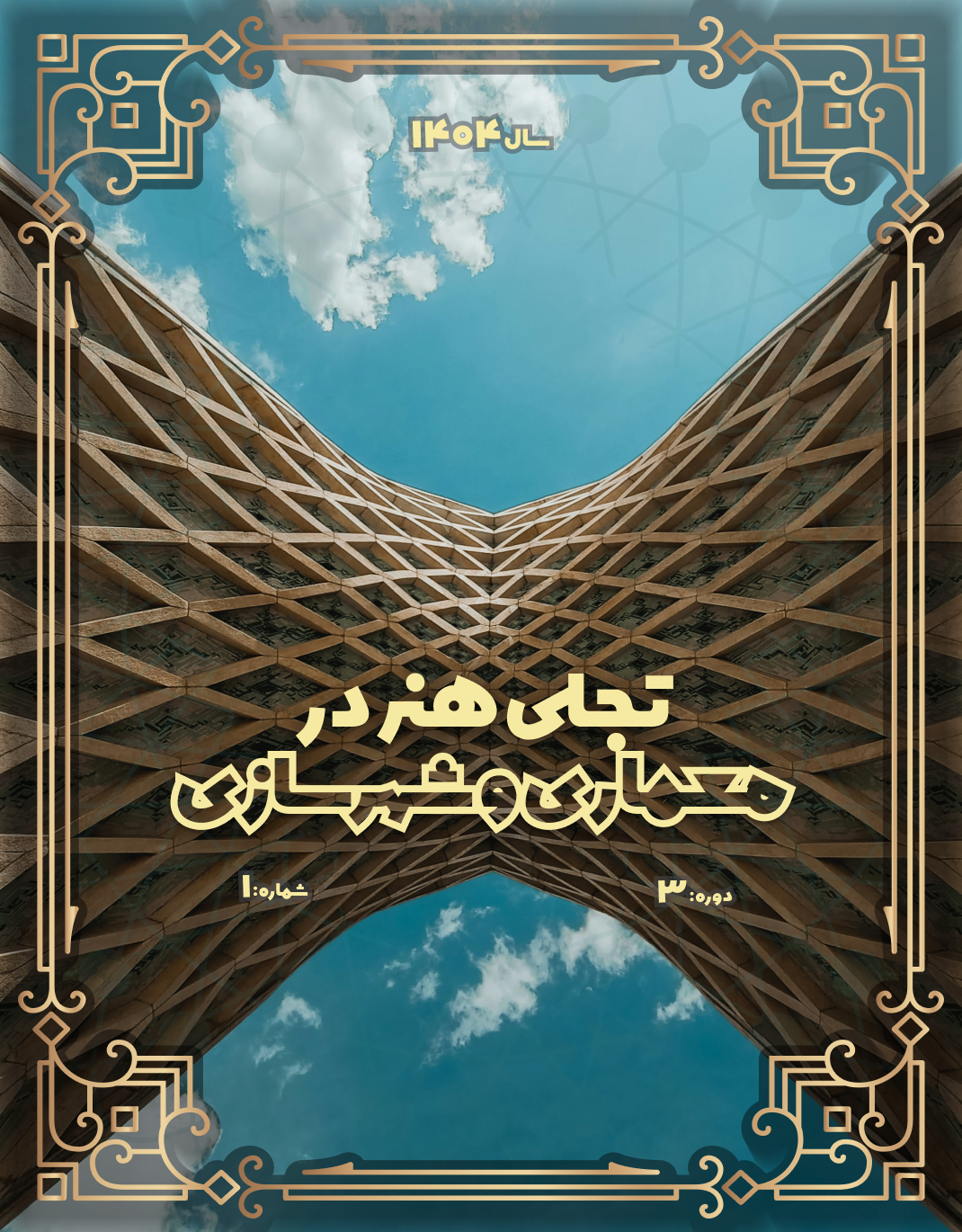Modeling the National Housing Programming Process to Improve Effectiveness and Reduce Costs
Keywords:
Program planning , national housing, BWM model, modelingAbstract
To achieve the goals of national housing initiatives, it is essential to utilize advanced planning models in conjunction with a comprehensive and integrated approach. Accordingly, the aim of this study is to model the national housing programming process in order to reduce costs and enhance effectiveness. This study is a developmental-applied research conducted using a qualitative method. Data collection tools included semi-structured interviews and a questionnaire. The statistical population consisted of 30 experts and managers in the fields of housing and urban planning, selected through purposive sampling. Interview data were analyzed using qualitative content analysis, which involved transcription of interviews, initial coding, clustering of similar codes, and extraction of key themes. In the final phase, seven proposed models were formulated and used to design a 22-item questionnaire based on the Likert scale. A second sample of 90 professors and relevant experts was selected using the snowball sampling method. Quantitative data were analyzed using the Best-Worst Method (BWM) weighting model. The results indicate that the criteria of demand forecasting, resource optimization, financial resource provision, and risk identification hold the highest importance across the various models. The scheduling and resource optimization model, with the lowest inconsistency and the highest optimal weight, provides the most accurate basis for decision-making. The needs analysis and demand forecasting model and the public-private partnership model also demonstrated high significance. In contrast, the budgeting and financial resources model showed the highest level of inconsistency, indicating a need for improvement in comparative assessments. The findings of this study suggest that national housing planning, using the proposed models—ranked by importance as follows: scheduling and resource optimization, public-private partnership model, new construction technology models, needs analysis and demand forecasting, quality management model, risk analysis model, and budgeting and financial resource provision model—is optimally achievable.
Downloads
References
1. Paknejad N. Mehr Housing Series Reports (1): Analysis and Review of the Status of Per Capita Facilities and Amenities in Mehr Housing Projects. 2024.
2. Kerzner H. Project management: a systems approach to planning, scheduling, and controlling: John Wiley & Sons; 2025.
3. Fewings P, Henjewele C. Construction project management: an integrated approach: Routledge; 2019.
4. Imannejad R, Avakh Darstani S, editors. Optimization of Project Scheduling Problem with Resource Constraints Using Metaheuristic Algorithms2019 January 5, 2019; Tehran.
5. Neshat A, Niknaei M, Sharifzadegan MH. Housing Prediction for Low-Income Groups by Analyzing Supply and Demand (Case Study: Damghan City). Human Geography Research. 2013;45(3):147-68.
6. Naseri S, Mansouri SA, Barati N. Comparison of the Role of Two Approaches: Landscape and Planning in Improving Housing Quality in Iran with Emphasis on Mehr Housing (Scientific Article of the Ministry of Science). Manzar. 2024;16(67):26EP - 39.
7. Amjadi-Mohab F, Madanchi-Zaj M. Identifying Factors Influencing Private Sector Participation in Public-Private Partnership Projects Transferable in the National Budget Using Fuzzy Delphi and Structural Equation Approaches. Public Sector Accounting and Budgeting. 2021;5(2):2-23.
8. Ghaffari E, Daneshfard K, Memarzadeh Tehran G. Designing a Public-Private Partnership Model for Urban Infrastructure Development Projects (Case Study: Tehran Municipality). Quarterly Journal of the Iranian Management Science Association. 2020;15(60):27-50.
9. Ghoddousi P, Eshtehardian E, Jooybanpour S, Javanmardi A. Multi-mode resource-constrained discrete time-cost-resource optimization in project scheduling using non-dominated sorting genetic algorithm. Automation in construction. 2013;30:216-27.
10. Zahraie B, Tavakolan M. Stochastic time-cost-resource utilization optimization using nondominated sorting genetic algorithm and discrete fuzzy sets. Journal of construction engineering and management. 2009;135(11):1162-71.
11. Peleskei CA, Dorca V, Munteanu RA, Munteanu R. Risk Consideration and Cost Estimation in Construction Projects Using Monte Carlo Simulation. Management (18544223). 2015;10(2).
12. Creemers S, Demeulemeester E, Van de Vonder S. A new approach for quantitative risk analysis. Annals of Operations Research. 2014;213:27-65.
13. Rezaei J. Best-worst multi-criteria decision-making method. Omega. 2015;53:49-57.
14. Sajadi S, Karmi M. Best-worst multi-criteria decision-making method: A robust approach. Decision science letter. 2018;7(4):323-40.
15. Esmaeili M, Rahbari Manesh K. Providing an Optimal Policy Model for Improving Housing Quality Using Grounded Theory Approach. Environmental Planning. 2023;16(63):1-26.
16. Ministry of Roads and Urban Development. Annual Report of the National Housing Action Plan. TehranPB - Ministry of Roads and Urban Development Publishing2023.
17. Mohammadjafari A, Ghannadpour SF, Bagherpour M, Zandieh F. Multi-Objective Multi-mode Time-Cost Tradeoff modeling in Construction Projects Considering Productivity Improvement. 2024.
18. Shahrokhian M. Examining the Physical Impacts of Post-War Reconstruction Programs on Social Changes in Dezful's Old Fabric: Shahid Beheshti University, Faculty of Architecture and Urban Planning, Post-Disaster Reconstruction Research Group (Unpublished); 2009.
19. Motouf S, Shahrokhian M, Kazminia E. Post-war reconstruction of Jamale neighborhood of Isfahan. Bagh Nazar. 2018;15(65):41-8.
20. Fallahi A, Khakpour M, editors. Hoveyzeh After Reconstruction: Re-Evaluating the Rebuilding of the War-Torn City of Hoveyzeh. Third International Conference on Comprehensive Crisis Management in Natural Disasters; 2007; Tehran.
21. Matouf S. Analyzing the Reconstruction Process of Abadan and Khorramshahr from Theoretical Perspectives. Bagh-e Nazar. 2004;103(1):1-85.
22. Masoudi-Nejad R, Matouf S, Shahrokhian M, Kazemi-Nia E. Comparative Study of Commercial and Social Markets with a Focus on Historical Markets of Dezful and Shushtar as Commercial Markets Post-War Reconstruction of Jamaleh Neighborhood in Isfahan. Iranian Architecture Studies. 2016;5(10):73-100.
23. Hillier FS, Lieberman GJ. Introduction to operations research: McGraw-Hill; 2015.
24. Abdoli MR. Evaluation of the National Housing Action Plan. 2021.
25. Hosseini M, Kamalvand A, editors. Risk Management Implementation Process and Providing an Executive Method for Its Application in Construction Projects (Case Study: Mehr Housing Projects)2015 February 21, 2015; United Arab Emirates.
26. Abdollahnejad E, Nazari A, Rahmatinia O. Review and Evaluation of Construction and Commissioning Risks in Building Projects (Case Study: Hospital). Engineering and Construction Management. 2017;2(3SP - 36):45.
Downloads
Published
Submitted
Revised
Accepted
Issue
Section
License
Copyright (c) 2025 Sepehr Adibzadeh (Author); Bahman Adibzadeh; Ali Akbari (Author)

This work is licensed under a Creative Commons Attribution-NonCommercial 4.0 International License.










